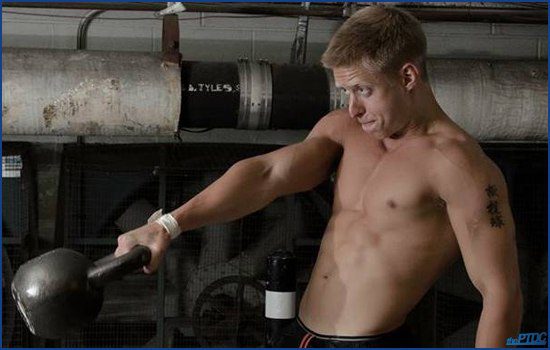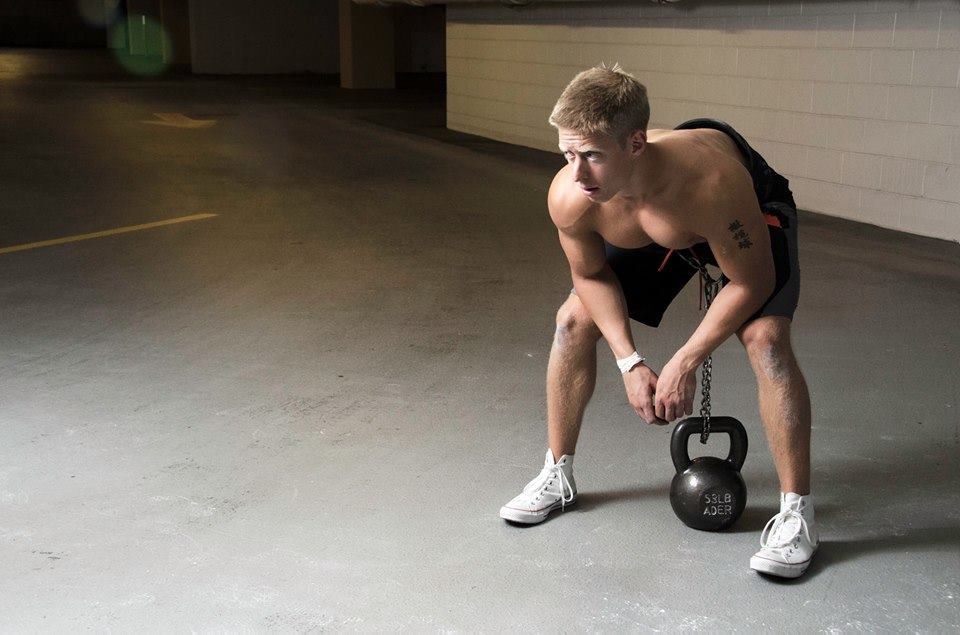I'm sure we're very similar: constantly pursuing strength and athleticism for our clients. Better performance, more confidence, and better health for our clients push us to pursue PR's and new goals with your clients.
Problem is, by neglecting to monitor their rest periods, you're trashing their gains and you don't even know it.
Few training variables get less respect in the gym than rest periods. Luckily, these exercise rest period guidelines will have your clients resting their way to gains in no time:
- Don't follow the same exercise rest periods for workouts ad-nauseum. As loading parameters and volume change so will the rest period and active recovery exercise.
- If someone's still torched after two minutes, take another minute. You know their body better than a timed rest-interval; however, exercise rest period should be in the ballpark to match the goals.

Training Implications
The amount of time and rest between exercises has huge implications to training adaptations. The amount of time between sets will determine:
- Restoration of short-term energy substrates like creatine-phosphate
- Central nervous system recovery for maximal power output and technical proficiency
- Clearing metabolites from muscular contractions (good or bad, depending on the goal)
- Variations in heart rate; full recovery is essential for certain training goals.
If you're looking to increase lactate threshold incomplete recovery is appropriate. If you're maxing out or doing technical speed work it isn't.
The Duration of the Exercise Rest Periods Depends on the Goal
Like anything else, training must be goal specific. Running 400-meter sprints between Max Effort deadlifts workouts won't get you as big as Paul Bunyan. Conversely, snacking on Skittles between Tabatas won't get you shredded.
All aspects of training, must be specific to the goals to achieve the desired outcomes.
Exercise Rest Periods for Strength Workouts
For maximal strength, rest periods must be long enough for the nervous system to recover for future high-intensity bouts. In most cases, rest periods of three to five minutes' between heavy strength sets (85%+ 1-Rm) suffice.
Shorter rest periods impair physical performance during subsequent sets (Rahimi et al.) and, over several weeks, attenuate strength increases compared to long rest periods (Spiering et al.) Anything less than what's needed leaves weight on the bar and limits maximal strength gains.
Ramping /Ascending Sets
Most workouts use ascending loading, a method of increasing load as the body warms up. This ramps up the nervous system and potentiates the body to handle increasing loads during exercise.
Be cautious when planning ramping sets and increase rest intervals when need. If rest periods are too short neural and muscular fatigue counter potentiation, leaving weight on the bar and ingraining poor technique.
Non-Competing Supersets
We've all performed non-competing supersets at some point. Non-competing supersets combine two movements in back-to-back sets before returning to the first exercise. This is a great method to increase workout efficiency, but not optimal for maximum strength development if two compound exercises are used.
On the flipside, this is great for building muscle and higher density training. By training opposing muscle groups shorter rest periods are used between each exercise. This increases training efficiency while allowing adequate recovery between sets of the same exercise.
Non-competing supersets are the cat's pajamas for assistance work because they achieve higher training density, higher total volume for hypertrophy, and good strength gains.
Example:
A1) Chin-Up - 4 x 6 - Rest 90 seconds
A2) Military Press - 4 x 6 - Rest 90 seconds.
Exercise Rest Periods and Athletic Performance
In most cases, the greater the performance of a client the greater neurological output they produce. A powerlifter's performance is maximized with optimal CNS function for specific movements and a 100-meter sprinter is wired to accelerate as fast as your car.
With clients the greater the level of performance the more sensitive they become to demanding training methods. Training methods used with athletes like sprints, speed development work, Plyos, Olympic lifts, and heavy compound lifts are neurologically demanding and sensitive to technical changes.
As activities get less neurologically demanding shorten the rest periods as it fits your clients goals. This means no, you don't need two minutes down after pumping the biceps.
Exercise Order and Rest Periods
Nervous system rest requirements shed light on the importance of proper exercise order for performance. As stated by the NSCA, "Compound power and core exercises require the highest level of skill and concentration of all exercises and are most affected by fatigue (Baechle and Earle 390-391)."
Clients who become fatigued are prone to using poor technique and consequently are at a higher risk of injury.
Unless you're training high-level Crossfit athletes, a 400-meter sprint followed by 15 power cleans at 75% 1RM and 50 box jumps is a bad idea. Exercise order and rest must match the training goals. Ignoring this is a recipe for overtraining and poor movement, not high performance gains.
My recommendations are as follows:
- Dynamic/movement training: Jumps, sprints, throws
- Explosive/Power: Power cleans, snatches
- Compound Strength: Squats, deadlifts, presses, pulls
- Compound/higher rep/hypertrophy: Squats, deadlifts, presses, and pulls
- Isolation work: Curls, calf raises, leg extensions
- Conditioning
Post Activation Potentiation
Post-Activation potentiation is an advanced training method to supercharge power output. Abbreviated "PAP", this physiological adaptation describes the immediate enhancement of muscle force during explosive movements after a heavy resistance exercise (Robbins 2005).
For PAP, an athlete performs a heavy strength training exercise followed by an explosive exercise that mimics the biomechanics of the strength training exercise. After the heavy exercise neural drive increases, allowing for greater power output in the ballistic exercise. The complex pair repeats for multiple sets. Over time, this improves neuromuscular efficiency and the muscles ability to generate force.
There's no uniform agreement for optimal recovery between potentiating exercise and movement for maximum performance (Macintosh et al.) I've found 1-3 minutes between exercises to work well, but this will vary based on client ability levels. This exercise rest period allows for PAP training stimuli while promoting a higher workout density and sufficient training volume. PAP is not for everyday clients or beginner athletes. It's a stressful training method that requires careful consideration.
Exercise Rest Periods for Muscle Growth
I'm a huge proponent of emphasizing strength for muscle growth, but longer exercise rest periods are always the answer. If you've had a skin-searing pump after multiple short-rest sets you've experienced metabolic stress. The pain isn't for naught; the pump is necessary for muscle growth.
According to Brad Schoenfeld, the accumulation of metabolites is the result of short rest and long-tension exercises. These require the use of anaerobic glycolysis, resulting in the buildup of lactate, hydrogen ions, creatine, and other metabolites. So yes, if your "Fred" is looking to get jacked for the Holidays then a nauseating pump with short rest is perfect for training.
Training for muscle growth requires a well-rounded approach. Emphasize heavy weights/low reps (1-6), moderate weight with moderate reps (8-12), and the occasional higher rep sets (15+). Hitting all rep ranges maximizes stimulation of the muscles. Rest periods of 2-5 minutes, 45-90 seconds, and 0-30 seconds fit the various rep ranges, respectively.
Exercise Rest Periods to Shred Fat
When training to shred fat do this one important thing -- maintain strength. Staying strong in a caloric deficit maintains anabolic hormone levels, strength, and holds onto lean muscle mass.
After strength is emphasized, intensity and incomplete recovery maximize training density. Except for neurologically demanding exercises, rest periods below 60 seconds with increase training density and total caloric expenditure.

Fat Loss and Hormones
Hormonal adaptations change based on exercise rest periods. Short exercise rest periods are recommended for muscular hypertrophy exercise protocols because they augment a greater GH response compared to long rest periods (Rahim et al).
So while longer rest periods are best for nervous system recovery, technique, and force development the shorter rest periods (30-60 seconds) are better for burning fat and muscle building. Therefore, use rest periods as the goals dictate -- understand the differences with each.
Rest Periods and Neurological Requirements
Compound exercises like cleans and squats have greater neural and mechanical requirements than a barbell curl -- do you really need the same rest?
Umm, no.
Look at the muscles involved in a clean versus a biceps curl:
Quads, glutes, hamstrings, calves, traps, rectus abdominus, erector spinae (to name a few) versus the biceps, brachialis, and brachioradialis.
The power clean has greater muscular and neural requirements to execute the exercise, increasing rest requirements. This is nearly universal as multi-joint exercises have greater requirements than isolation exercises.
The same goes for high-intensity sprints, plyometrics, and ballistic movements. The exercise rest periods must match the requirements and goals optimal results.
Exercise Rest Periods Wrap-Up
Rest periods are vital variable competitive lifters, athletes, and weekend warriors. Always follow the points below:
- Make rest periods specific to clients' goals
- Never blindly follow rest periods, but you should be in the ballpark for the quality you're training.
- Ascending sets require increasingly heavier rest periods.
- Supersets are great for workout density and hypertrophy, not so much max strength.
- PAP is a very advanced method. Find the balance between potentiation and fatigue.
Make rest periods specific to clients training and blast through their plateaus, it's that simple.
Further Reading
13 Ways to Vary any Exercise - Jonathan Goodman
On CrossFit - Jonathan Goodman
Personal trainer marketing ideas - Mike Samuels
What do You Need to Become a Personal Trainer - Jonathan Goodman
References
Baechle, Thomas, and Roger Earle. Essentials of Strength and Conditioning. 3rd. Champaign, Il: Human Kinetics , 2008. 390-391. Print.
Rixon KP, Lamont HS, Bemben M. Influence of type of muscle contraction, gender, and lifting experience on postactivation potentiation performance. J Strength Cond Res. 2007; 21: 500-505.
Robbins, D.W. Postactivation potentiation and its practical applicability: a brief review. J Strength Cond Res. 2005, 19(2): 453-458.
Wilson JM, Duncan NM, Marin PJ, Brown LE, Loenneke JP, Wilson SM, Jo E, Lowery RP, Ugrinowitsch C.Meta-analysis of postactivation potentiation and power: effects of conditioning activity, volume, gender, rest periods, and training status. J Strength Cond Res. 2013 Mar;27(3):854-9. doi: 10.1519/JSC.0b013e31825c2bdb.










